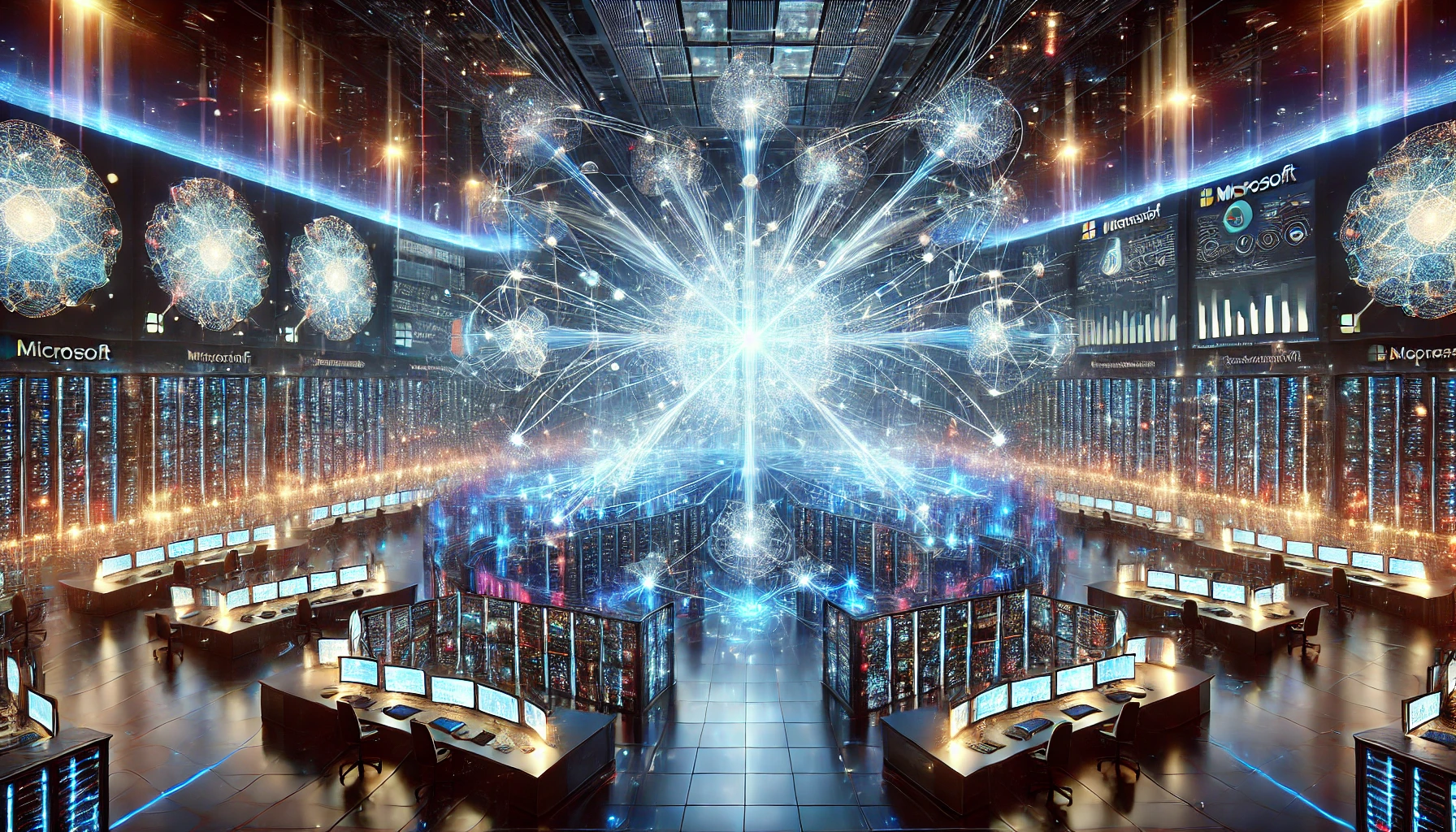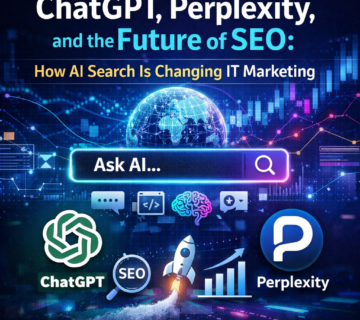Microsoft and OpenAI May Have Cracked Multi-Datacenter Distributed Training for AI Models

The rapid evolution of artificial intelligence (AI) continues to generate significant excitement and concern, particularly when it comes to the infrastructural demands required to power the next generation of AI models. A recent report suggests that Microsoft and OpenAI may have achieved a significant breakthrough in multi-datacenter distributed training for their large language models (LLMs), potentially unlocking new levels of efficiency and scalability in AI development.
What Is Multi-Datacenter Distributed Training?
Distributed training refers to the process of training AI models across multiple compute units simultaneously. Traditionally, this process has been limited to a single data center due to the complexities involved in synchronizing data across geographically distant locations. Multi-datacenter distributed training would involve connecting multiple data centers across different regions, allowing AI models to be trained at unprecedented scales.
Achieving this would mean increased computational efficiency, faster training times, and the ability to handle the growing size and complexity of modern AI models like OpenAI’s GPT-4. This breakthrough could revolutionize AI infrastructure and accelerate advancements in areas such as natural language processing, computer vision, and autonomous systems.
Microsoft and OpenAI’s Fiber Deals: A Key Indicator
A key part of this breakthrough comes from Microsoft’s actions, which signal that they may have indeed cracked the code for multi-datacenter distributed training. According to semiconductor researcher Dylan Patel, Microsoft has signed deals worth over $10 billion with fiber companies to connect its data centers across multiple regions. This substantial investment highlights the tech giant’s commitment to building the necessary infrastructure for distributed AI training.
Additionally, there are filed permits that suggest Microsoft is digging between certain data centers, presumably to lay the groundwork for these fiber connections. Patel has pointed out that with the data center networks Microsoft is building, the company could be in a position to distribute training workloads across at least five major data centers—a feat that could significantly reduce bottlenecks in model training.
The Infrastructure Challenge: Energy Demands and Cooling
Despite the promise of multi-datacenter distributed training, the energy demands of these AI systems are enormous. As AI models grow more complex, so does their need for resources like electricity and cooling. Each NVIDIA H100 GPU, which powers many modern AI models, requires up to 1,400 watts of power. With tens of thousands of GPUs involved in training models across multiple data centers, the total energy usage can easily exceed a gigawatt.
There are concerns about the sustainability of this infrastructure, as many regions already struggle with power availability. For instance, Elon Musk’s Tesla Cortex AI supercluster project is projected to require an additional 500 MW by 2026 just to meet cooling and power demands. Similarly, Microsoft and OpenAI’s efforts could require multi-gigawatt power usage in the near future.
Why This Matters for AI
The implications of cracking multi-datacenter distributed training are profound. Not only does it open up new possibilities for scaling AI models, but it also positions Microsoft and OpenAI at the forefront of the AI revolution. Being able to train models across multiple locations allows for faster processing times and better resource management, which could lead to quicker advancements in AI capabilities.
Moreover, this technological leap could enable more efficient use of renewable energy sources across data centers, thereby reducing the carbon footprint associated with AI training. However, achieving this will require careful planning, substantial investment in infrastructure, and overcoming regulatory and logistical hurdles.
Competitive Landscape: Google and Other Players
Although Microsoft and OpenAI’s recent progress is impressive, they are not the only companies making strides in AI infrastructure. Google remains a dominant player in the field, with arguably the most advanced computing systems for AI training. Despite entering the AI race later than Microsoft, Google’s sophisticated infrastructure gives it a significant edge in the highly competitive AI space.
Other players like Anthropic and Tesla are also vying for a share of the AI market, with Tesla developing its own supercluster to fuel AI systems for autonomous driving and energy management. While Microsoft and OpenAI’s breakthrough is noteworthy, they still face stiff competition from these tech giants.
The Road Ahead: Scaling and Sustainability
While multi-datacenter distributed training represents a monumental step forward, the road ahead is filled with challenges. The infrastructure required to support such large-scale AI models is incredibly complex, and the sheer amount of power and cooling necessary to run these systems poses environmental and economic challenges.
That said, Microsoft and OpenAI’s collaboration and investment in AI infrastructure indicate a strong commitment to overcoming these obstacles. By connecting multiple data centers and investing heavily in fiber optic networks, they are creating the groundwork for the future of AI—a future where models are trained faster, more efficiently, and on a global scale.
How Technijian Can Help
At Technijian, we specialize in providing cutting-edge technology solutions, including cloud infrastructure, network optimization, and data center management. As businesses increasingly rely on AI and distributed systems to power their operations, having the right infrastructure in place is crucial. We offer comprehensive services that help companies:
- Optimize their data center performance by ensuring that their systems are running efficiently and sustainably.
- Implement cloud-based AI solutions that are scalable and secure.
- Develop distributed networks that allow for more efficient resource management and reduced downtime.
With Microsoft and OpenAI pushing the boundaries of AI infrastructure, it’s more important than ever to have a robust, reliable system in place. Whether you’re looking to upgrade your current infrastructure or implement new technologies to support AI, Technijian has the expertise to guide you through every step of the process.
FAQs
Q1: What is multi-datacenter distributed training? A1: Multi-datacenter distributed training refers to the practice of training AI models across multiple data centers in different locations, allowing for greater efficiency and scalability in model development.
Q2: How does Microsoft’s fiber deal contribute to AI training? A2: Microsoft’s $10 billion fiber deal connects its data centers across regions, enabling the possibility of distributed AI training, which reduces bottlenecks and speeds up the process.
Q3: What are the energy demands for AI model training? A3: AI model training requires substantial energy, with each GPU consuming up to 1,400 watts. Large-scale AI training operations can demand power usage upwards of a gigawatt.
Q4: How does this development compare to Google’s AI infrastructure? A4: While Microsoft and OpenAI are making strides in distributed training, Google still leads in AI infrastructure with its advanced systems, positioning it ahead of competitors.
Q5: What are the environmental concerns related to AI training? A5: AI training demands significant electricity and cooling resources, raising concerns about sustainability and environmental impact, especially as AI models grow in size and complexity.
Q6: How can Technijian assist businesses with AI infrastructure? A6: Technijian provides expert services in cloud infrastructure, data center optimization, and distributed networks, ensuring businesses have the support they need to scale their AI systems effectively.
About Technijian
Technijian is a premier provider of managed IT services in Orange County, delivering top-tier IT solutions designed to empower businesses to thrive in today’s fast-paced digital landscape. With a focus on reliability, security, and efficiency, we specialize in offering IT services that are tailored to meet the unique needs of businesses across Irvine, Anaheim, Riverside, San Bernardino, and Orange County.
Located in the heart of Irvine, Technijian has earned a reputation as a trusted managed service provider in Irvine for businesses seeking robust IT support. Our dedicated team of IT experts ensures that your technology infrastructure is always optimized, secure, and aligned with your business goals. Whether you require IT support in Irvine, IT support in Orange County, managed IT services in Irvine, or IT services in Orange County, we’ve got you covered. Our expertise also extends to providing managed IT services in Anaheim, IT support in Riverside, and IT consultant services in San Diego.
As a leader in IT support in Orange County, we understand the challenges businesses face when maintaining and advancing their IT environments. That’s why our comprehensive suite of services includes IT infrastructure management, IT support in Anaheim, IT help desk, and IT outsourcing services. With proactive monitoring, disaster recovery, and strategic consulting, our goal is to minimize downtime, enhance productivity, and provide IT security services that give you peace of mind.
At Technijian, we take pride in offering customized managed IT solutions that exceed client expectations. From small businesses to large enterprises, our IT services in Irvine are designed to scale with your needs and support your growth. We specialize in cloud services, IT systems management, business IT support, technology support services, IT network management, and enterprise IT support. Whether you’re looking for IT support in Riverside, IT solutions in San Diego, or managed services in Orange County, Technijian has the expertise to meet your requirements.
Our managed service providers in Orange County offer comprehensive solutions for every business need. Whether you need help with IT performance optimization, IT service management, or IT security solutions, we provide services that enable businesses to remain agile in today’s competitive market. Our IT support services in Orange County and managed IT services in Irvine ensure your operations remain secure, productive, and future-ready.
We also offer managed service provider services and IT support in Irvine, CA, focusing on delivering efficient and scalable IT services across Southern California. Technijian is committed to providing IT managed services in Irvine, IT support in Anaheim, and IT services in Orange County, CA that adapt to the ever-changing demands of business technology.
Experience the difference with Technijian—your trusted partner for IT consulting services, managed IT services, and IT support in Orange County. Let us guide you through the complexities of modern IT infrastructure and help you achieve your business objectives with confidence.






